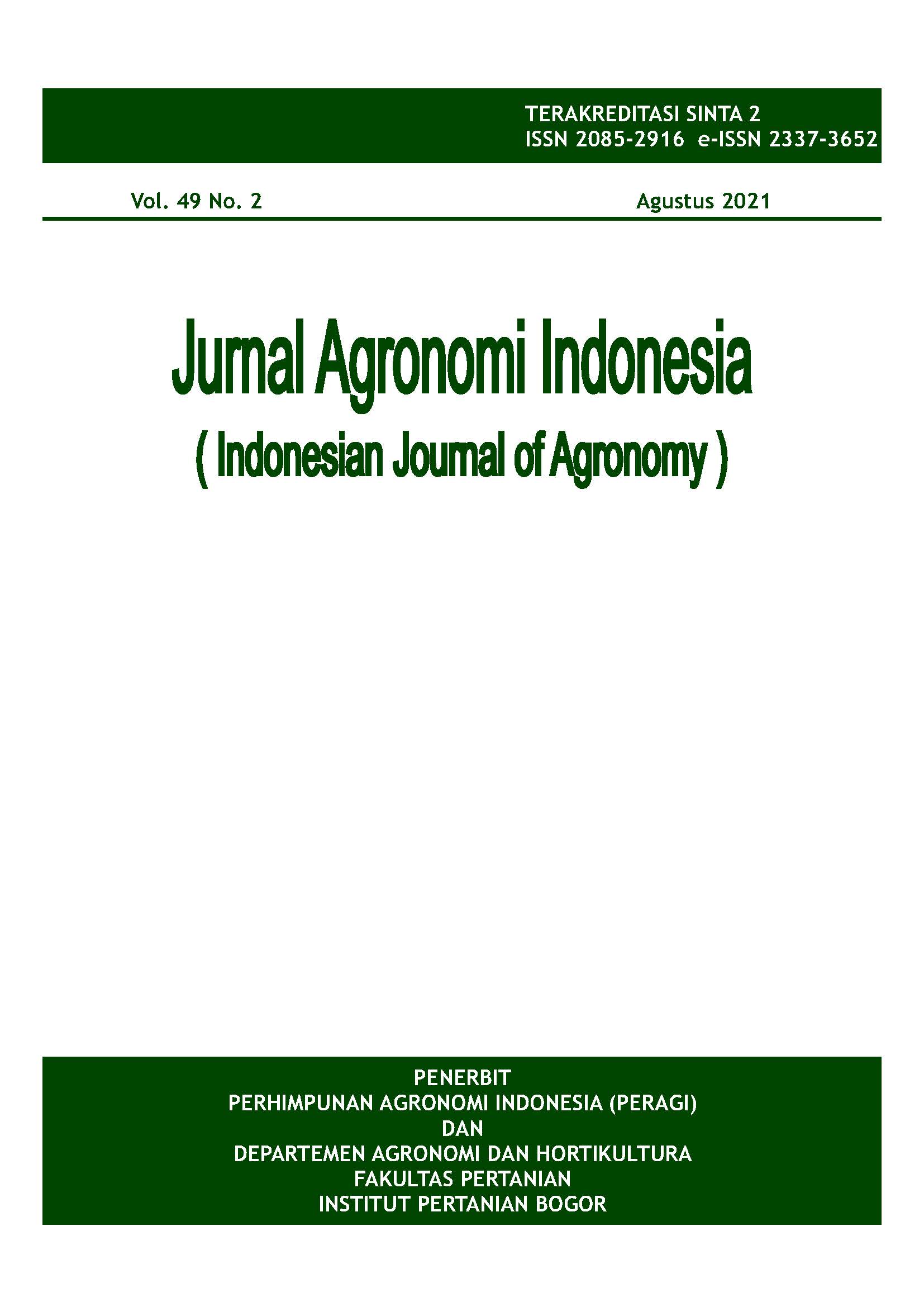Pertumbuhan dan Produksi Beberapa Varietas Padi (Oryza sativa L.) pada Berbagai Interval Irigasi
Abstract
Increasing rice production in the dry season can be performed by improving irrigation management and use of rice varieties with high water use efficiency. This study aimed to compare the response of growth and production of six rice varieties to different irrigation intervals and obtaining the estimate of water use efficiency. This research was conducted from June to November 2019 in Indramayu Regency using a split-plot design with irrigation intervals as the main plot, namely A = continuous irrigation, B = 4-day interval, C = 8-day interval, D = 12-day interval, and six rice varieties as the subplot, namely V1 = Ciherang, V2 = Mekongga, V3 = INPARI 32, V4 = IPB 3S, V5 = INPAGO 11 and V6 = Situ Bagendit. The results showed that the growth and yield of rice were influenced by watering interval and variety. Longer watering intervals decreased growth and yields more markedly. IPB 3S had the highest water use efficiency and INPAGO 11 had the lowest efficiency. The best irrigation interval at the time of this study was the 8-day interval, or irrigation that should be applied if the water level became 1.62 cm below the soil surface.
Keywords: efficiency of irrigation water use, intermittent irrigation, water level













